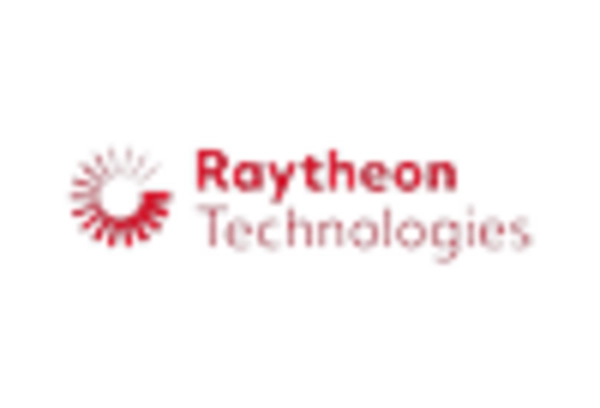Emerging Applications in Earth Monitoring
The satellite payloads market is increasingly influenced by the emergence of new applications in Earth monitoring. As environmental concerns grow, there is a rising demand for payloads that can provide accurate data on climate change, natural disasters, and resource management. The market for Earth observation satellites is expected to expand significantly, with a projected CAGR of XX% over the next five years. This growth is driven by the need for real-time data to support decision-making in various sectors, including agriculture, forestry, and urban planning. Consequently, the satellite payloads market is likely to see a diversification of payload types tailored to meet these emerging needs.
Growing Demand for Communication Services
The increasing reliance on satellite communication services is a key driver for the satellite payloads market. As the demand for broadband connectivity and mobile communication rises, satellite operators are investing in advanced payloads to enhance service delivery. The market for satellite communication is expected to grow at a CAGR of XX% over the next few years, reflecting the need for robust payloads that can support high data rates and low latency. This growth is further fueled by the expansion of 5G networks, which require sophisticated satellite payloads to provide seamless connectivity in remote areas. Consequently, the satellite payloads market is poised for significant growth as operators seek to upgrade their systems.
Increased Investment in Space Exploration
The satellite payloads market is benefiting from heightened investment in space exploration initiatives. Government agencies and private companies are allocating substantial budgets to develop advanced payloads for missions to the Moon, Mars, and beyond. For example, NASA's Artemis program aims to return humans to the Moon by 2024, necessitating the development of specialized payloads for lunar exploration. This trend indicates a robust growth trajectory for the satellite payloads market, as the need for innovative payload solutions becomes paramount. The total investment in space exploration is projected to exceed $XX billion by 2030, further driving demand for advanced satellite payloads.
Regulatory Support for Satellite Launches
The satellite payloads market is positively impacted by regulatory support aimed at facilitating satellite launches. The U.S. government has implemented policies that streamline the licensing process for satellite operators, thereby encouraging investment in new payload technologies. This regulatory environment fosters innovation and competition within the market, as companies are more willing to invest in advanced payload development. Additionally, the increasing number of private players entering the market is likely to drive further advancements in payload capabilities. As a result, the satellite payloads market is expected to grow, supported by a favorable regulatory landscape that promotes the expansion of satellite services.
Technological Advancements in Payload Design
The satellite payloads market is experiencing a surge in technological advancements that enhance payload capabilities. Innovations in materials science and engineering are leading to lighter, more efficient payloads, which can significantly reduce launch costs. For instance, the integration of advanced sensors and communication technologies allows for improved data collection and transmission. This trend is particularly relevant as the market is projected to reach approximately $XX billion by 2026, driven by the demand for high-performance payloads. Furthermore, these advancements enable the development of specialized payloads for various applications, including telecommunications, remote sensing, and scientific research, thereby expanding the market's potential.
















